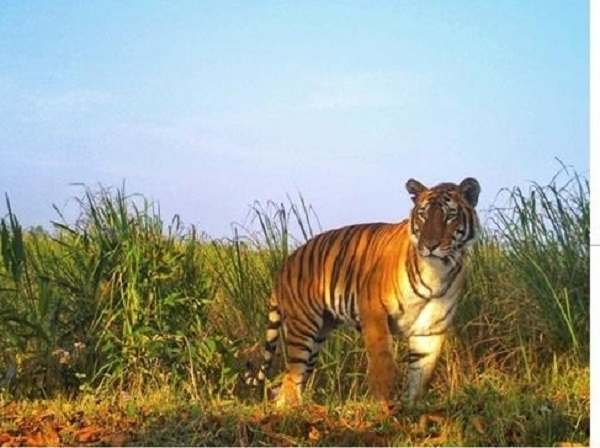Jaipur, (Samajweekly) It is a fact that a missing tigers mystery has been haunting the desert state for years. However the experts have been unable to trace these missing big cats.
Even as the nation celebrates the 50 glorious years of Project Tiger, the questions being raised about these missing big cats are yet to be answered by officials.
The Forest Department recently found the carcass of a male tiger in Masalpur range of Kailadevi Wildlife Sanctuary (KWLS). The death at KWLS adjoining the famous Ranthambore Tiger Reserve (RTR) came as a conservation setback at the proposed tiger reserve. Four tigers have gone missing from the reserve since 2020.
After pregnant Tigress-138 went missing from the proposed reserve, male tiger T-132 has not been sighted for long. Evidence of the big cat was last found in Masalpur range a couple of months ago. Young tigers T-132 and T-136 moved out of RTR nearly five months ago. While T-136 reached till Morena district of MP, T-132 found its home in KWLS. Forest officials, however, claimed the carcass recovered is not of T-132.
Last year, Amer MLA Satish Poonia raised a question in the Assembly on whether an inquiry has been conducted into the number of tigers born and missing from areas like the Ranthambore National Park, Sariska Tiger Reserve, Mukundra Hills National Park, among others, from January 2019 to January 2022.
The forest department said, “The record submitted in the state Assembly on missing tigers revealed that a total of 13 tigers have disappeared from the Ranthambore National Park between 2019 and 2021. Two male tigers T-20 and T-23 went missing from the park in 2019 and seven big cats — five males named T-47, T-42 T-64, T-95, T-97 and two females T-73 and T-92 — disappeared in 2020.
“At present most of the 32 female tigress are in reproductive age, due to which there has been an increase in the birth of cubs,” the department stated. “A total of 44 cubs have been born between the year 2019 to 2021. Due to the high number of tigers in the battered areas of Ranthambore Tiger Reserve, there is a high number of cases of missing tigers, territorial fights and deaths.”
It was also informed that since the establishment of the Ranthambore Tiger Reserve in 1973, the number of tigers is maximum at present. The number of tigers and their cubs in the adjoining areas of Ranthambore has gone up from 66 in 2019 to 81 in 2021.
Presently, the ratio of male to female tigers is 1:1.3 which is abnormal, said the Forest Department in response to a question raised by Poonia on the missing tigers.
Environmentalist Babulal Jaju says that around Rs 50 crore have been spent on installing cameras in the jungles, yet the missing tigers are still to be traced. Why, Jaju asked?
He went on to say: “We need to believe that tiger area has decreased due to which there are many territorial fights. More jungles need to be created in days to come. Also, boundaries need to be created in jungles to ensure smooth and safe living of big cats.
“The villages inside Project Tiger should be vacated and compensation should be paid to villagers dwelling there. This will ensure a healthy relationship between the villagers and animals. If there are no villagers in the jungle, the animals will be safe.
“Also, thee is a need to create more tiger reserves for plenty of space for this big cat. The much-awaited Kumbhalgarh Tiger Reserve project should be turned into reality. Vehicles for safaris should be reduced and within limits.”“
Rajsamand MP and NTCA member Diya Kumari has been pitching for making Kumbhalgarh Sanctuary into a Tiger Reserve. The NTCA had already sent the Feasibility Assessment Report for appropriate action.
The State Government had to take action on the report and send it to the Ministry of Wildlife and Environment along with its recommendation. However, so far no action has been taken on the matter by the Rajasthan government, she said recently during the NTCA meeting.
The other points discussed at the meeting pertained to development of a tiger corridor for tiger movement; tiger relocation from one state to another which will solve the problem of inbreeding; opening new zones in Ranthambore, Sariska and Ramgarh Tiger Reserve; increasing the funds.










